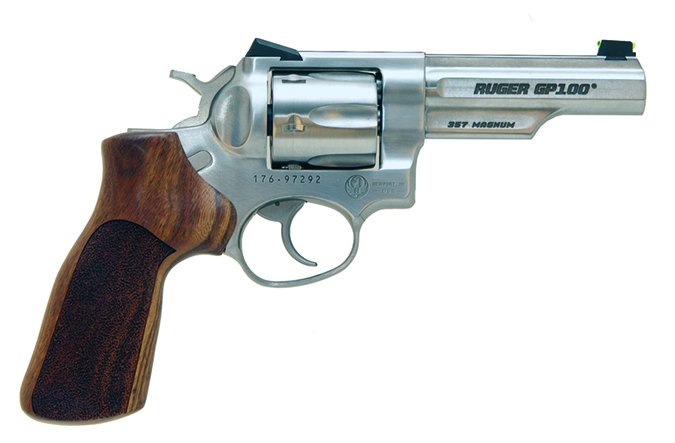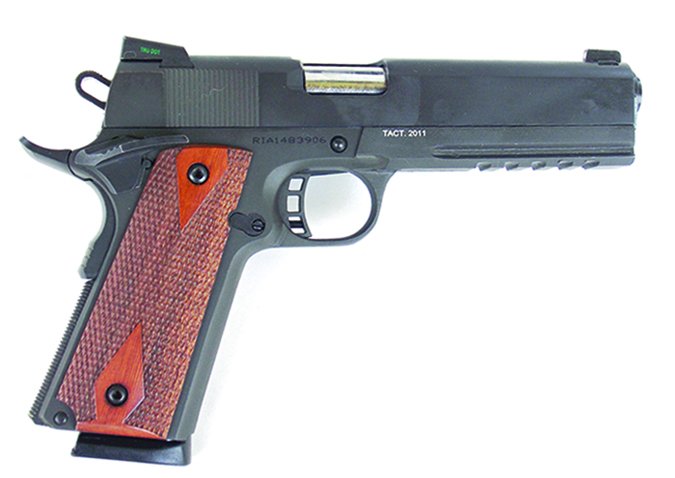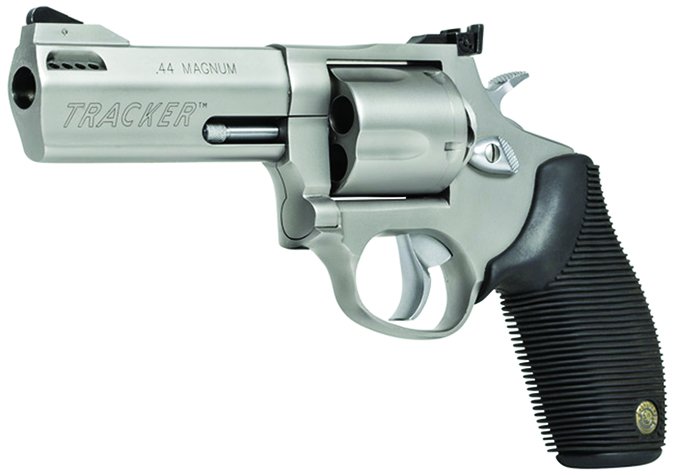Re “IDPA Revolvers: Ruger’s Match Champion, S&W’s Pro 686 SSR,” December 2014
I just read your review of the Ruger GP100 Match Champion compared to the Smith 686. I know the review is three years old, but I hope my experience will be useful to other readers. I dithered over purchasing the 686 or the GP100 for months. I dry-fired every one I could find of each. Every single 686 in single action had a nearly perfect trigger pull off the shelf. The GP100s ranged from as good as the 686 to almost as good.

I finally opted for the GP100 due to its incredibly strong construction. I went with the Range Champion, hoping that the more expensive model would have a more carefully fitted trigger.
That was not the case. Because no local dealers had one in inventory, I had to order one. It came with noticeable take up. I returned it to Ruger with a very nice letter, expecting one of the company’s pistolsmiths would take a little time with it. Unfortunately, all that was done was to swap the trigger mechanisms. The new trigger was an improvement, but still not what I expected from a $1000 gun. I took it to a local gunsmith who told me the sear was just a little too long. For $40 he fixed it.
It seems a shame that I had to pay a gunsmith to get the trigger right, but I now love the gun. No take-up; clean, crisp trigger break; smooth, light double action, and built like a tank! More accurate than I can shoot, except from a really good rest. My shooting buddy who has been a dyed-in-the-wool Smith fan recently texted me that he wanted to shoot mine one more time before he bought one for himself. —DB
Glad you like the Range Champion. Roger Eckstine said the Ruger Match Champion was an awesome gun out of the box, if not quite perfect.
— Todd Woodard
Pest Gitter Follow-Up
Hi, Todd. You recommended the RWS-brand pellet gun to fill my specific requirements, and I owe you thanks, as well as feedback. To recap my situation, I run a horse farm in Virginia. Spilled feed attracts uninvited pests. Number one is “pidgins.” Conventional gunfire would frighten horses and run off the customers who ride on my property.
The RWS magnum is the weight and dimensions of a centerfire hunting rifle. The barrel breaks open to cock and load. Quality is excellent, and it comes with a decent scope and mounts. I ordered it from Cabela’s and paid about $500. RWS claims 1000 fps with a 22-caliber pellet. I believe it, but can’t confirm it. At 100 feet I am accurate and lethal on pidgin, rat, starling, and other fur-and-feather pests. I get hits beyond 150 feet, but accuracy and lethality diminish markedly. I have learned stealth. When fired, the sound does not carry, and does not upset horses and customers. It is effective, enjoyable, and avoids all the problems of traps and poison. It’s not the National Match M14 I was trained on. Limited range and lethality remains an issue and I may come back to you about a suppressed 22. — Willson

Music to my ears. I badly want an integrally-suppressed 10-22, preferably a takedown model. But you might check the Gun Tests archives and find a top-ranked 22 bolt gun and have the barrel threaded for a can you like. If you use a bolt gun that will chamber 22 Shorts and Longs as well as Long Rifles, then it’s easy to find subsonic ammo and you don’t have to have gas to operate the self-loading mechanism of the semi-auto. Or you can buy the “B”-ranked Marlin XT 22RZ 22 LR, $220 reviewed in the June 2017 issue and shown above. It is already specced for 1⁄2×28 tpi, so you’d just need an appropriate suppressor. Please let me know how it turns out if you go that route. — tw
Re “Guns of the Year 2017,” December 2017
About the Rock Island recommendation: Spent an inordinate amount of time trying to track down the Rock Island firearm listed in your 2017 picks article. Just got off a chat session with Armscor; they tell me that this particular firearm, the TAC Standard FS Night 45 ACP, was discontinued in 2016. If so, I understand. Some customers only read the title and the price and say, “I gotta get me some of that.” Interestingly, I have had two requests for that gun in the past week. So I know that I’ve got at least two customers who read your articles. I do have one customer who is a subscriber, and he is always calling me and quizzing me on guns featured in your publication, and he buys quite a few also.
— Steven McKee
Manager, Silverado Arms
Mentor, Ohio

Sorry about that. We bought our sample in July 2016 from Sarcoinc.com, the source listed in the article. I received the article from Bob Campbell in January 2017, and it ran in the April 2017 issue. So the gun was in retail availability at the time of the test, but I didn’t check about its avail on the Armscor website prior to it running in the December 2017 issue. For those who want to find the pistol at retail, it’s Model 51484, UPC Code 4806015514848. — tw
Re “Five-Shot 44-Caliber Revolvers From Ruger, S&W, and Taurus,” January 2018
Received your latest issue and was anxious to read about the 44s. I was disappointed to see no comment about the experience of shooting a ported-barrel revolver. With the Taurus Tracker, was there an increase in perceived muzzle blast? Is there any increased risk of injury to the shooter from ported gas/flame when firing in close quarters? I have never fired a ported handgun and have some concerns about injury/damage to anything in close proximity to the gas ports. — John
Thanks for reading. As mentioned in the article, the Taurus revolver exhibited the least felt recoil of the revolvers tested, load for load. I added that perhaps most was due to the Ribber grips, but then some must be attributed to the barrel ports. The ports did not add to muzzle blast; in fact, the Taurus was quite reserved in muzzle blast compared to the shorter-barrel revolvers. I would not wish to fire a ported barrel from the retention position below my eyes. But the blast of the Taurus was never offensive, even when firing from the barricade braced position. On the other hand, all revolvers tend to blast the barricade with cylinder-gap blast. — Bob Campbell

Time for my own “comparison”: I decided to test a McLaren P1 versus two trucks, the Ford F-150 and the Chevrolet Silverado. The McLaren was twice as fast in the Quarter Mile, and its track and slalom tests were measured in seconds as opposed to minutes for both pick-ups. However, its payload capacity and cargo space was very limited, so I gave it a “B.” This was despite it being among the best commercially available “Super Cars”; it just failed as a truck. Does this sound silly to you? It should. In your January 2018 issue, you did the same thing comparing the Ruger GP100 44 Special to the S&W Model 69 and Taurus Tracker 44 Magnums. The comparison was ludicrous. The GP100 never claimed to be a 44 Magnum, and it beat the other two in head-to-head tests for every category. Except, of course, for the one test for which it was never designed. In fact, you said, “The GP100 44 Special is more accurate than all but a very few revolvers we have tested.” Does this really sound like a “B” grade to you? You can’t mark something down for not being something it wasn’t. What you did do was put a “B” grade on a great 44 Special revolver that some guy quickly browsing the newsstand may remember. He may not have had time to read your entire write up, and will never know why it got the “B,” only that it was graded that way. It’s unfair to Ruger, and unfair to the readers of your magazine, and definitely unfair to the guy who just purchased an inferior revolver based on your grade. In the future, please compare apple to apples, and don’t downgrade an orange for not being an apple. — Andrew

Thanks for reading. Comments like yours are interesting and keep the team thinking. I do not think anyone purchasing an “A”-rated gun will ever get an inferior product. Nor is a B-rated gun always inferior in every way. It simply doesn’t meet the test criteria as well as the “A”-rated gun, which in this case included an emphasis on power and accuracy, with reliable function the baseline. It was legitimate to compare five-shot 44-caliber revolvers, even if one was a 44 Special. The data was certainly there to recommend the Ruger to anyone who wants a 44, but who doesn’t want a Magnum. And, of course, “Firing Line” is the most closely read part of the magazine, and you’ve made a strong case for the Ruger. — Bob Campbell
Re “Case-Prep Stations from RCBS, Lyman, and Frankford Arsenal,” January 2018
I finished reading the latest issue of GT, and it was another awesome issue. But I really loved the Case Prep Station test. I have the Lyman Case Prep Express and I love it. I got it three years ago on a killer Black Friday sale, and I have used it to prep 44 Magnum, 45 ACP, 50 AE, and 5.56/223 Rem., all with good results. Previously, I had used the RCBS Universal case prep center and found it lacking. But it is good to see that RCBS has improved that tool considerably. So if I may make a suggestion; please keep testing the reloading tools. Case trimmers, progressive reloaders, T presses, scales and so. Keep up the good work! — M. Penrod
Re “Downrange,” January 2018
Who is responsible for reporting drug addicts to NICS? If the answer is the user, then my impression of the database is that it is a flawed system. Expecting illegal drug users to self report is not reality. In Seattle, “safe” shooting sites for heroin users are an issue. Registered nurses, paid for with taxpayer dollars, are supervising such sites to prevent overdosing deaths. There should be a requirement for heroin users’ names to be reported the NICS data base system before using the site. I appreciate Gun Tests — you don’t hesitate to tackle the tough issues that impact legal users’ access, ownership, and use of firearms. Thanks for listening. — Bruce
Hey Bruce: I appreciate your comments. Yes, the self-reporting of drug users has always been a ridiculous idea. My recollection is that the 4473 drug provision is almost always used only as leverage in an existing crime. That is, a drug user in possession of a legal firearm when robbing you has both state and federal exposures if he gets caught. — tw





























